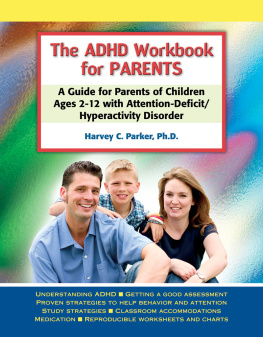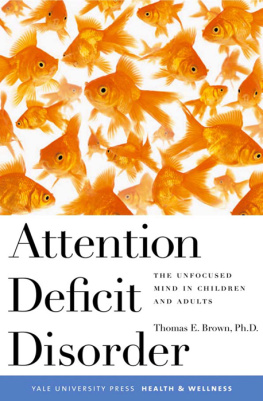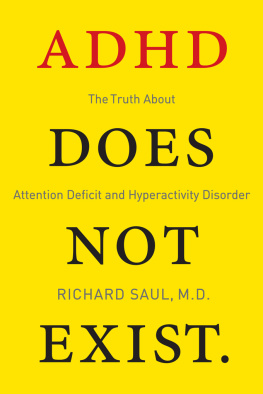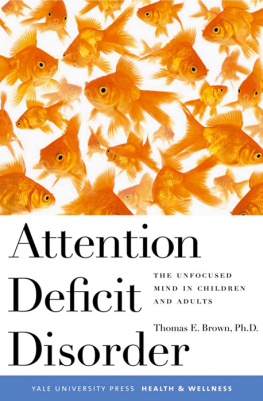Table of Contents
List of Figures
List of Tables
Landmarks
Therapists Guide to Clinical Intervention
The 1-2-3s of Treatment Planning
Third Edition
Table of Contents
Copyright
Academic Press is an imprint of Elsevier
125 London Wall, London EC2Y 5AS, United Kingdom
525 B Street, Suite 1800, San Diego, CA 92101-4495, United States
50 Hampshire Street, 5th Floor, Cambridge, MA 02139, United States
The Boulevard, Langford Lane, Kidlington, Oxford OX5 1GB, United Kingdom
Copyright 2018 Elsevier Inc. All rights reserved.
No part of this publication may be reproduced or transmitted in any form or by any means, electronic or mechanical, including photocopying, recording, or any information storage and retrieval system, without permission in writing from the publisher. Details on how to seek permission, further information about the Publishers permissions policies and our arrangements with organizations such as the Copyright Clearance Center and the Copyright Licensing Agency, can be found at our website: www.elsevier.com/permissions.
This book and the individual contributions contained in it are protected under copyright by the Publisher (other than as may be noted herein).
Notices
Knowledge and best practice in this field are constantly changing. As new research and experience broaden our understanding, changes in research methods, professional practices, or medical treatment may become necessary.
Practitioners and researchers must always rely on their own experience and knowledge in evaluating and using any information, methods, compounds, or experiments described herein. In using such information or methods they should be mindful of their own safety and the safety of others, including parties for whom they have a professional responsibility.
To the fullest extent of the law, neither the Publisher nor the authors, contributors, or editors, assume any liability for any injury and/or damage to persons or property as a matter of products liability, negligence or otherwise, or from any use or operation of any methods, products, instructions, or ideas contained in the material herein.
Library of Congress Cataloging-in-Publication Data
A catalog record for this book is available from the Library of Congress
British Library Cataloguing-in-Publication Data
A catalogue record for this book is available from the British Library
ISBN: 978-0-12-811176-5
For information on all Academic Press publications visit our website at https://www.elsevier.com/books-and-journals

Publisher: Nikki Levy
Developmental Editor: Nate McFadden
Editorial Project Manager: Barbara Makinster
Production Project Manager: Lisa M. Jones
Designer: Greg Harris
Typeset by TNQ Books and Journals
Introduction
This third edition, like the first and second, is intended to serve as a comprehensive resource tool. Behavioral health industry changes continue to evolve with the development of evidence-based treatment, DSM 5, electronic health care records, telepsychology, and the documentation transition for clinicians to the diagnostic coding of the ICD-10 system of the World Health Organization. Regardless of the continuing evolution, the clinician providing behavioral health services operates within a formal ethical framework. It is likely that no other health treatment is so stringently founded on privacy and confidentiality than psychotherapy. Providing behavioral health interventions is a complex process that takes into consideration evidence-based practices, multifaceted individualized aspects of the individual, and institutional demands of the insurance industry.
Clinicians are sensitive to the needs of the individual, and the Therapists Guide to Clinical Intervention provides best practice interventions in an easy-to-use manner that provides the clinician the evidence-based treatment necessary to meet the patient where they are while respectfully incorporating personal need/desire, time, and resources. Case management demands continue to increase with documentation being more important than ever resulting in potentially more indirect service required by the clinician. Additionally, the consumer has become more sophisticatedoften inquiring about the type(s) of interventions a clinician uses, thus making commensurate educated decisions regarding the type of therapy they are seeking for a specific problem. Therefore, in many cases, both the consumer of services and the contractor of services expect the therapist to provide refined diagnostic skills, brief evidence-based treatment planning with defined goals and objectives, crisis intervention, case management with collateral contacts, contracting with the client for various reasons, and discharge planning that is well documented and research supported. The Therapists Guide to Clinical Intervention facilitates the ease of accomplishing these expectations by combining the aforementioned significant aspects of practice. All of this is provided in a single resource, versus a considerable number of review texts necessary to encompass a commensurate amount of information.
The third edition of the Therapists Guide to Clinical Intervention has retained the original format while updating organization to improve utility and evidence-based treatment supported by a thorough literature review. Changes in the DSM 5 played a role in both the organization associated with diagnostic categorization as well as diagnostic criteria. However, from a common sense perspective, specifically with regards to pediatrics, there was a break from DSM 5. The divergence in no way interferes with treatment planning, but it did increase ease of developmental clinical treatment planning and intervention with maximum ease of utilization. Additionally, the third edition will be structured into four sections consistent with prior editions.
The first chapter of the book is an outline of evidence-based cognitive behavioral treatment planning. This organization of goals and objectives associated with specific, identified problems supports thoroughness in developing an effective intervention formulation that is individualized to each client. The treatment planning section was designed to be user-friendly and to save time. There is a list of central goals derived from identified diagnostic symptoms and the associated treatment objectives for reaching those goals from a cognitive behavioral perspective. It goes without saying that not all individuals or diagnoses are amenable to brief therapy interventions. However, cognitive behavioral interventions can still be very useful in the limited time frame for developing appropriate structure and facilitating stabilization. Often the brief intervention will be used as a time for initiating necessary longer-term treatment or making a referral to an appropriate therapeutic group or psychoeducational group.

















